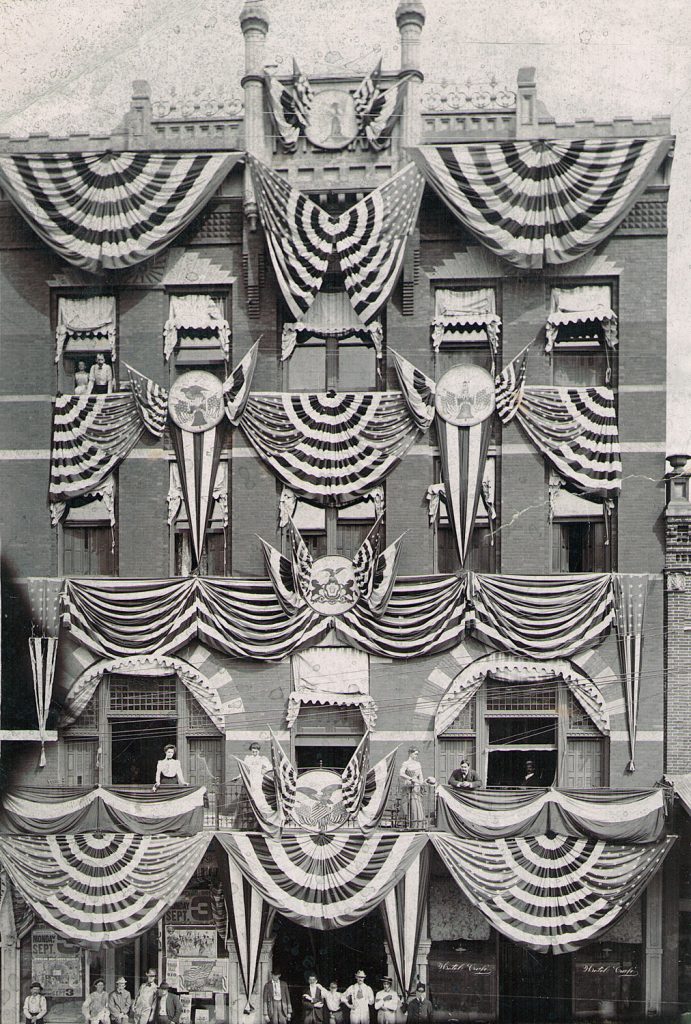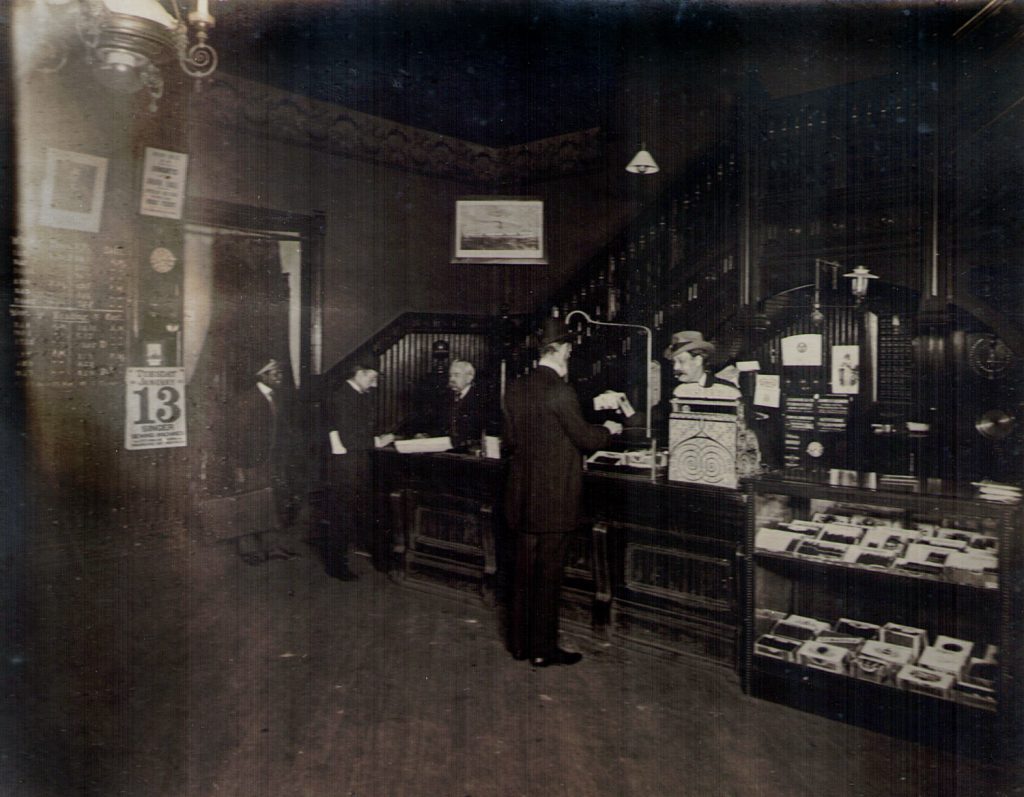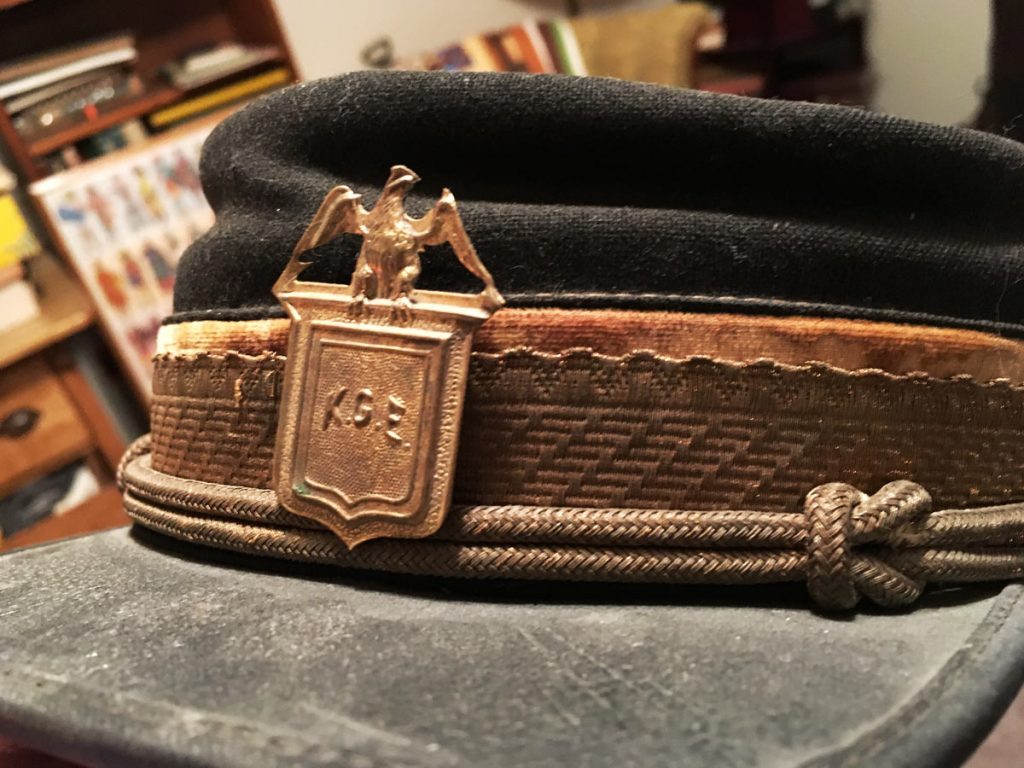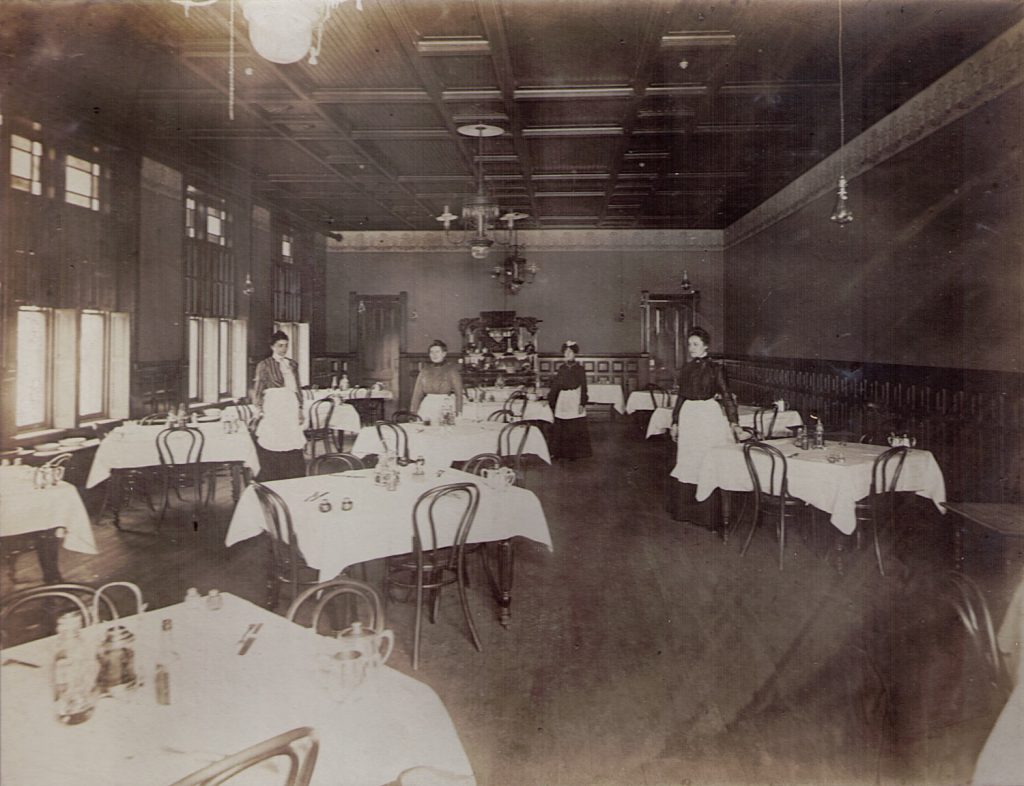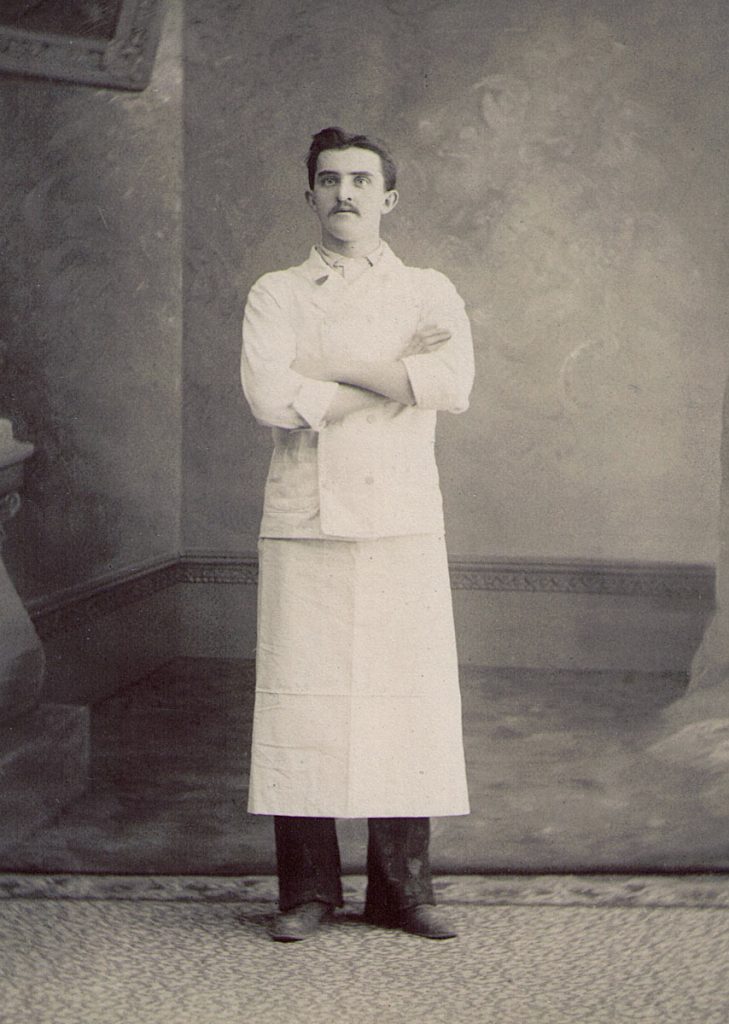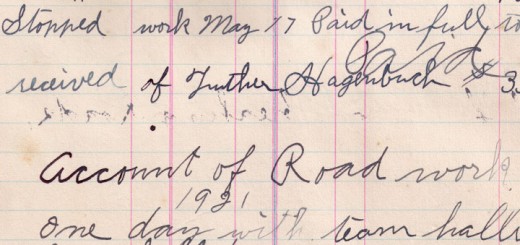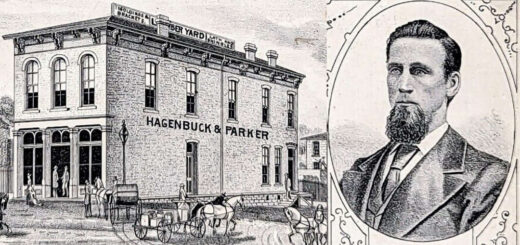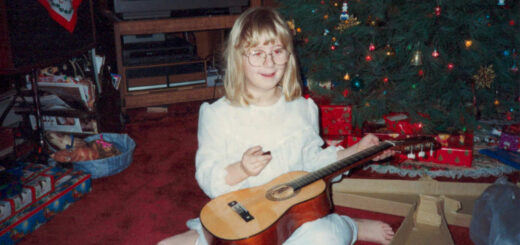Oh, The People We Don’t Know! Part 1
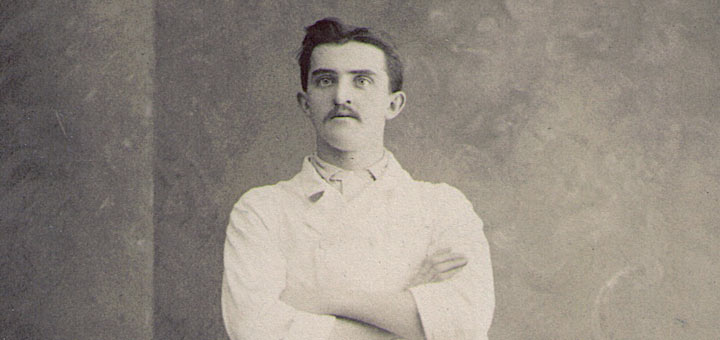
Three large collections of photos are in the Hagenbuch photo archives. The largest collection is, of course, the photos that are of people descended from my great great grandparents, William and Rebecca (Muffley) Hagenbuch. Another collection was donated by Roberta (Hagenbuch) Buck and are descendants of her great grandparents, Charles and Elizabeth (Hess) Hagenbuch from the Montgomery, PA area. The last collection was from Ethel Bibby, whose grandmother, Mary Ann (Hagenbuch) Foust, was a daughter of William and Rebecca (Muffley) Hagenbuch. Mary Ann was married to Tilman Foust and they lived in Milton, PA.
The Ethel Bibby collection has been featured previously on Hagenbuch.org. The Fousts had many friends from the Milton area and many photographs were taken of the Fousts and their acquaintances during the late 1800s and early 1900s. Three of these photos feature the Hotel Haag which was certainly well known by the Foust family. The hotel was located on the east side of S. Front Street. It was opened on April 1, 1890 by owner Benneville K. Haag, then was purchased in 1908 to become the Hotel Milton, and finally was turned into Peoples department store.
George Venios, in his book Chronicles and Legends of Milton published in 2002, writes of the Hotel Haag:
[I]t was publicized as one of the most magnificent hotels outside of Philadelphia and Pittsburgh. The brick building of modern American design had a massive entrance with storefronts on each side with fine French plate glass facing the street. The lobby was laid out with English tile and the main hall and office area had polished oak wainscot. The office was connected to every room in the house by electric bells and speaking tubes. The hotel had separate areas including a ladies parlor, smoking room, reading room and a large dining room on the second floor finished in polished oak. The third and fourth floors contained twenty-three bathrooms on each floor. Each room was provided with a steam radiator and finished in cherry and mahogany.
According to the poster to the left of the building, the photo of the exterior of the Hotel Haag was taken on Labor Day, Sept. 3. However, the year could be either 1894, 1900, or 1906. The hotel is decked out with all the patriotism one could imagine. Along with all the bunting, eagles, and liberty bells, the center decoration is the Pennsylvania coat-of-arms. It is not known for sure if any of the people in the photograph are relatives.
But, there is a possibility that the ladies standing on the second floor balcony are three of the Foust sisters. Using high magnification efforts, they resemble Mary Alice Foust, Lillian (Foust) Reed, and Sarah (Foust) Bibby. The man standing on the balcony (not in the window) resembles Harry Bibby. Harry and Sarah were Ethel Bibby’s parents. If indeed it is them, then the photo was likely taken in 1906 since Ethel’s parents were married in 1908.
The next photo is of the hotel’s lobby. The calendar on the left reads: Tuesday, Jan. 13, Singer Sewing Machines. The year is either 1891 or 1903. Above the calendar is an advertisement for a meeting of the Knights of the Golden Eagle. The Knights were founded in 1873 and held ceremonies and rituals based on the Crusades, both militaristic and Christian. Around 20 years ago I picked up a Knights of the Golden Eagle cap at a sale. The cigar case on the right side of the photo cannot be missed. It is filled with at least 20 boxes attesting to the fact that cigars were widely smoked at that time.
Above the left of the case is a print of a lady with a sash and advertisements for J.S. Rissel Furniture, Edw. W. Johnson Coal, Keystone Laundry, and dentist F. W. Bailey. Bailey practiced dentistry at 34 Broadway Ave. in Milton beginning in 1900 which means that we can now date this photo to 1903. The five men are not recognized, their identities lost to time. The African American man on the left is dressed in the uniform of a porter.
Finally, above the desk is a print that has been scrutinized with a magnifying glass for almost an hour! Andrew and I have decided it might be a print of a steamship (hence the smokestack in the center of the structure). And, it was common at that time to display prints of ships such as the Maine. But, after researching prints of ships from the time period, identification still cannot be determined. If anyone can identify this print, please let us know.
The third photo has to be of the “large dining room on the second floor” at Hotel Haag. By its design, the photo is a companion to the lobby photo so it was probably taken at the same time, most likely January 13, 1903. The tables have fine linen laid with condiments: salt and pepper in one corner, sugar and creamer in another corner, and the center with several bottles (oil and vinegar?). The side tables hold plates and in the back are glass cases with who knows what inside?
The four unknown, aproned ladies are waiting to serve; although the one on the left, dressed in a striped top with lace at her neck, would seem to be in charge. The center lights are fancy and might be gas. However, notice the single naked light bulb to the right!
The final photo has been saved for last because it epitomizes the title of this article. We cannot be sure that this fellow is a waiter at the Hotel Haag. Was he a friend of the Fousts? Was he a waiter or a chef? There is nothing in the photo to identify a year or any details about this man. But, look closely at the bottom of the photo where the carpet seems to meet another type of flooring. That is most certainly a backdrop at a photographer’s studio. And, the bottom front of the photo is inscribed with the photographer located at Broadway, Milton, PA — J. Rippel.
The Rippel Brothers had a studio in Milton from 1884 to the early 1900s. If this was taken in a studio, the photo was taken to show off his occupation —a waiter or cook with determination and confidence in his skills! However, we’ll probably never know his name nor his relationship with the Foust family. And, we’ll never know if he was really associated with the Hotel Haag.
Old photographs of people we cannot identify tease us, but with some sleuthing we can answer some of the questions they raise. The second part in this series will detail a few of the photos from the Roberta Buck collection, which include tintypes.

